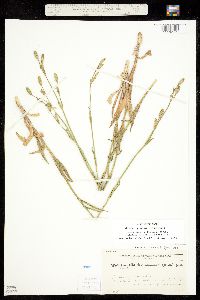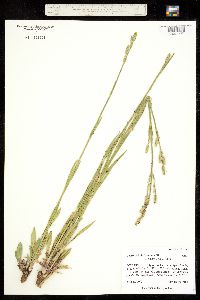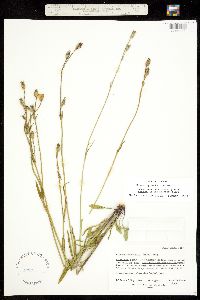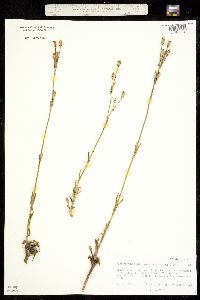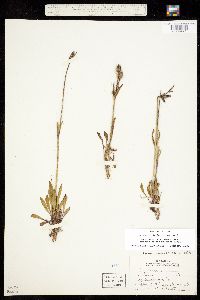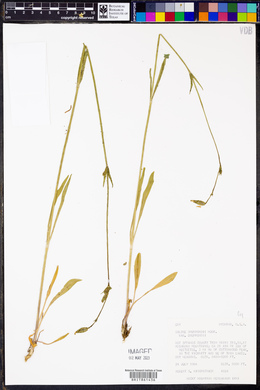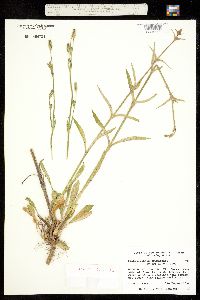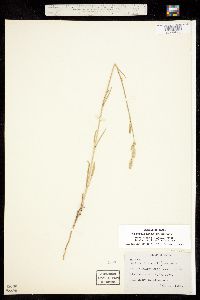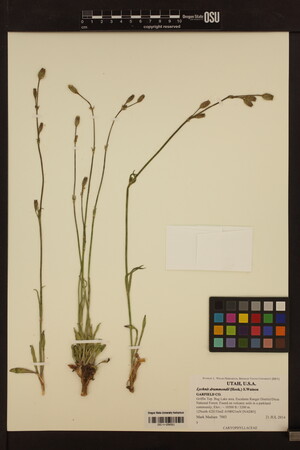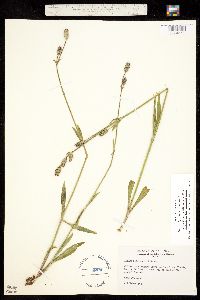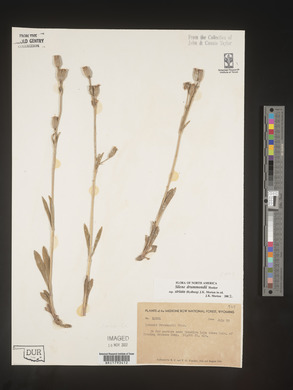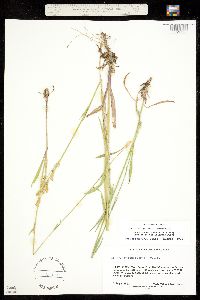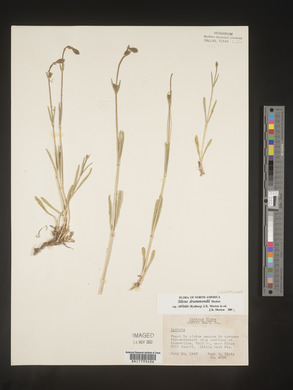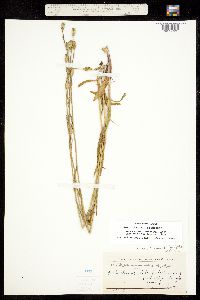Silene drummondii
|
|
|
|
Family: Caryophyllaceae
Drummond's campion, more...Drummond's campion, Drummond's Catchfly, Drummond cockle
[Gastrolychnis drummondii (Hook.) A.& D. Löve, moreLychnis drummondii (Hook.) S. Wats., Lychnis drummondii var. heterochroma B. Boivin, Lychnis drummondii var. striata (Rydb.) Maguire, Lychnis pudica Boivin, Lychnis striata Rydb., Melandrium drummondii (Hook.) Hultén, Silene drummondii subsp. drummondii , Silene drummondii subsp. striata , Silene drummondii var. drummondii Hook., Silene drummondii var. kruckebergii Bocquet, Silene drummondii var. striata (Rydb.) Bocquet, Wahlbergella drummondii (Hook.) Rydb.] |
Plants perennial; taproot stout; caudex branched, somewhat fleshy. Stems erect, simple or several from base, retrorsely puberulent proximally, densely so and viscid distally, with stipitate glands. Leaves: blade with stiff, appressed pubescence on both surfaces; basal petiolate, blade lanceolate to elliptic or oblanceolate, (1.5-)3-10 cm × 4-12 mm (including petiole); cauline in 2-5 pairs, blade linear to linear-lanceolate, 3-9 cm × 2-7 mm. Inflorescences 1-20-flowered, bracteate, strongly viscid-glandular or less densely pubescent, longer hairs sometimes purple-septate; bracts narrowly lanceolate, thick, 3-15 mm, herbaceous, apex acuminate. Pedicels stiffly erect, 0.1-5 cm, varying in length within same inflorescence. Flowers: calyx 10-veined, broadly tubular to narrowly ellipsoid, not inflated, 12-18 × 4-8 mm in fruit, 2-3 times as long as broad, membranous between veins, margins dentate with 5 triangular, 1.2-2 mm lobes erect in flower and spreading in fruit, apex acuminate, veins green; petals off-white to dusky pink or dingy reddish purple, clawed, equaling or to 11/ 2 times calyx, claw broadened distally, limb not differentiated from claw, narrower than claw, 1-3 mm; stamens included in calyx; styles (4-)5, included in calyx. Capsules 12-15 mm, equaling calyx (rarely to 11/ 2 times calyx), opening by (4-)5 spreading teeth. Seeds dark brown, not winged, reniform to angular, 0.7-1 mm diam., margins finely papillate; papillae triangular, slender, longer than broad. Subspecies drummondii is characteristically a prairie taxon, while subsp. striata is associated with the Rocky Mountains. However, the two taxa frequently appear to intergrade; e.g., in the Cypress Hills of southern Alberta and Saskatchewan, and in the southern Rockies. Variety kruckebergii appears to be a luxuriant form with a more elongate capsule and calyx. Silene invisa, a Californian species, is similar to S. drummondii, some plants of which, from Nevada and Arizona, tend to be intermediate (see note under S. invisa).
Inflorescences 1-10(-20)-flow-ered, strongly viscid-glandular. Fruiting calyces 12-15 × 4-6 mm, 2 4-3 times as long as broad. Petals off-white to dusky pink, equaling calyx. Seeds ca. 0.7 mm diam. 2n = 48. Flowering late spring-summer. Dry, often sandy or gravelly places, prairies, dunes, bluffs, hillsides, sagebrush, open montane woodlands and forests; 500-3000 m; Alta., B.C., Man., Sask.; Ariz., Colo., Idaho, Minn., Mont., Nebr., Nev., N.Mex., N.Dak., S.Dak., Utah, Wyo. Inflorescences 1-4(-8)-flowered, usually not densely pubescent, longer hairs often purple-septate. Fruiting calyces 13-18 × 6-8 mm, ca. 2 times as long as broad. Petals clearly exserted from calyx, dingy reddish purple, 11/ 1/ 2 times calyx. Seeds ca. 1 mm diam. 2n = 72. Flowering summer. Alpine meadows and rocky places, high prairies, open montane woodlands and forests; 1500-3800 m; Sask.; Ariz., Colo., Mont., Nev., N.Mex., Utah, Wyo. Perennial, 2-5 dm, retrorse-puberulent, becoming glandular and often hirsute in the infl; lvs mostly basal, the lanceolate or elliptic to oblanceolate blade 3-10 cm נ5-12 mm, petiolate; cauline lvs remote, 2-4 pairs, much reduced, usually linear; fls white or pinkish, perfect, 1-several in a loose, narrow infl; cal narrowly tubular, 1-1.5 cm in fl, enlarged but not inflated in fr, 10- nerved, glandular; pet included in the cal or the blade shortly exserted, the claw flaring upwards and usually broader than the blade, often auriculate, the blade 1-3 mm, retuse or shallowly lobed, the appendages less than 0.5 mm; styles (4)5; fr unilocular, opening by (4)5 teeth; 2n=24, 48. Dry hillsides and plains; B.C. to Ariz., e. to Sask., N.D., S.D., Neb., and Clay Co., Minn. June-Aug. (Lychnis d.) Gleason, Henry A. & Cronquist, Arthur J. 1991. Manual of vascular plants of northeastern United States and adjacent Canada. lxxv + 910 pp. ©The New York Botanical Garden. All rights reserved. Used by permission. |











